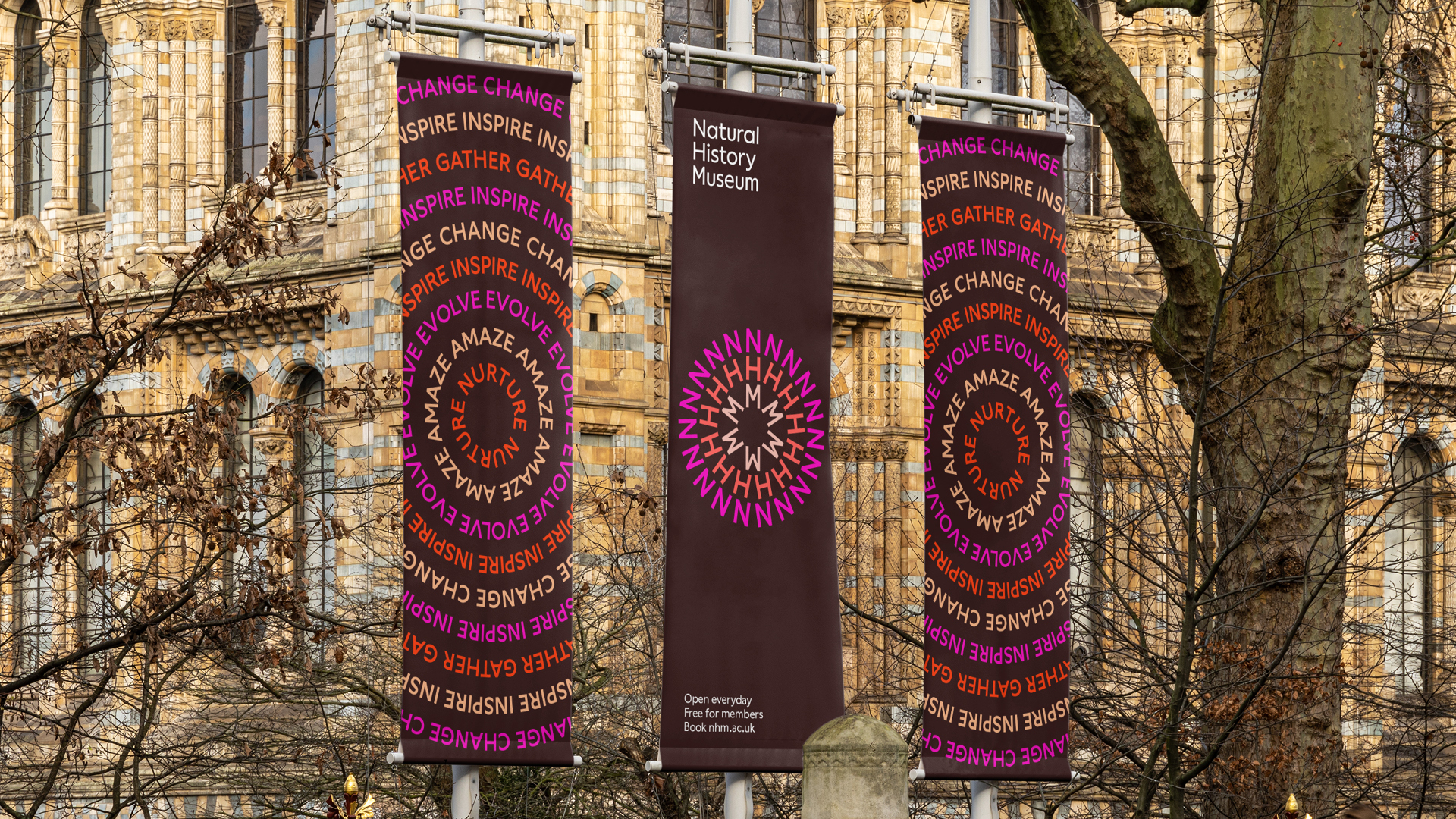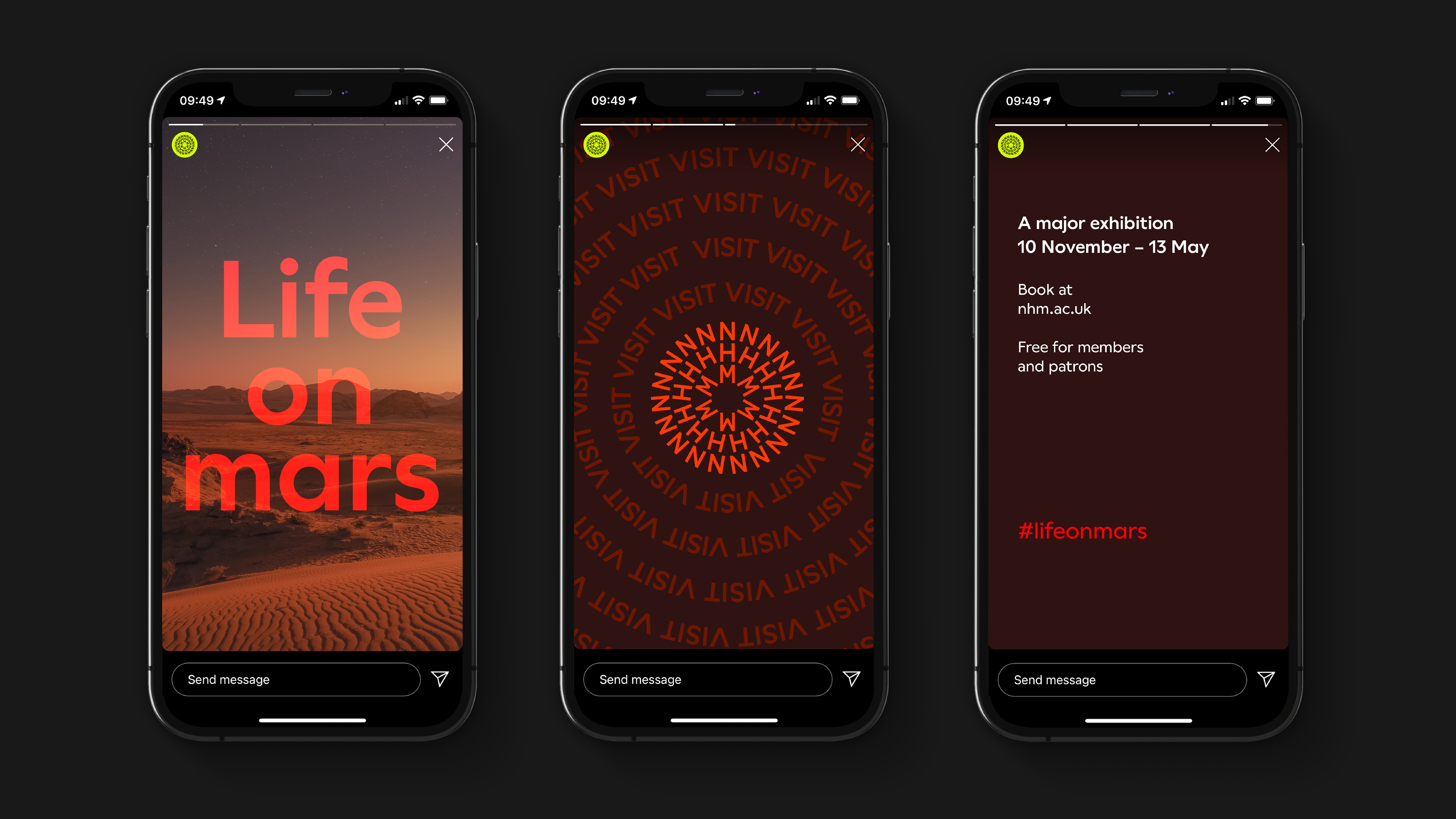Patterns
Our patterns are the visual representation of a catalyst, they can move, grow, expand, change form and communicate. They create an identifiable element that directly correlates to our brand, bringing colour and energy to our communications.
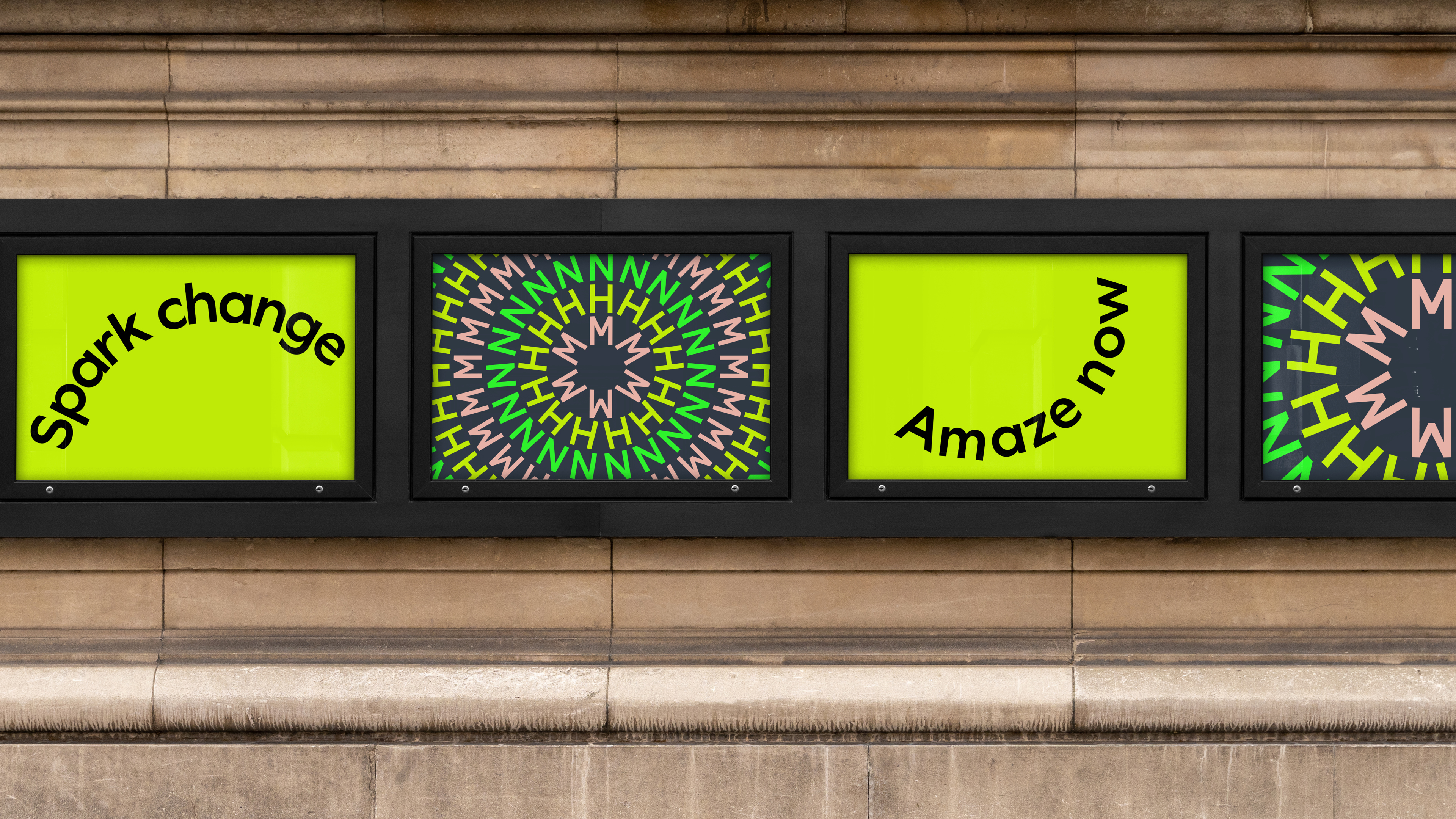
Types of patterns
For greater flexibility across our different communications, we use two different types; Patterns and Word Rings, using them as a static graphic or within motion. Both visually represent a catalyst and have a strong connection to our Symbol.
Patterns
Patterns always contain the letters N, H and M for a closer connection to the symbol. They have three rings and multiply by three each time to maintain this connection.
The size, distance, frequency and colour are all variable – allowing us to create unique and engaging graphics.
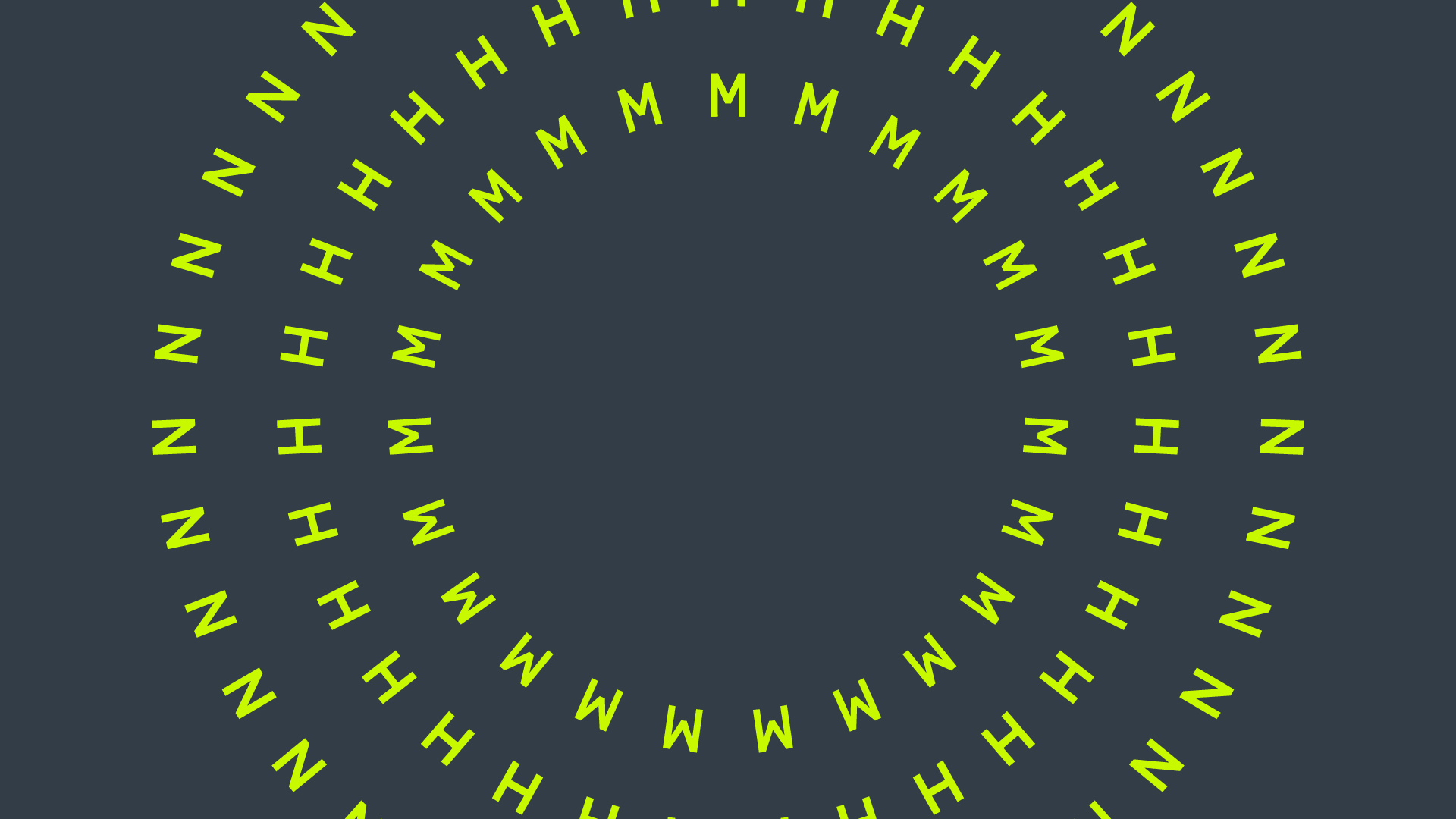
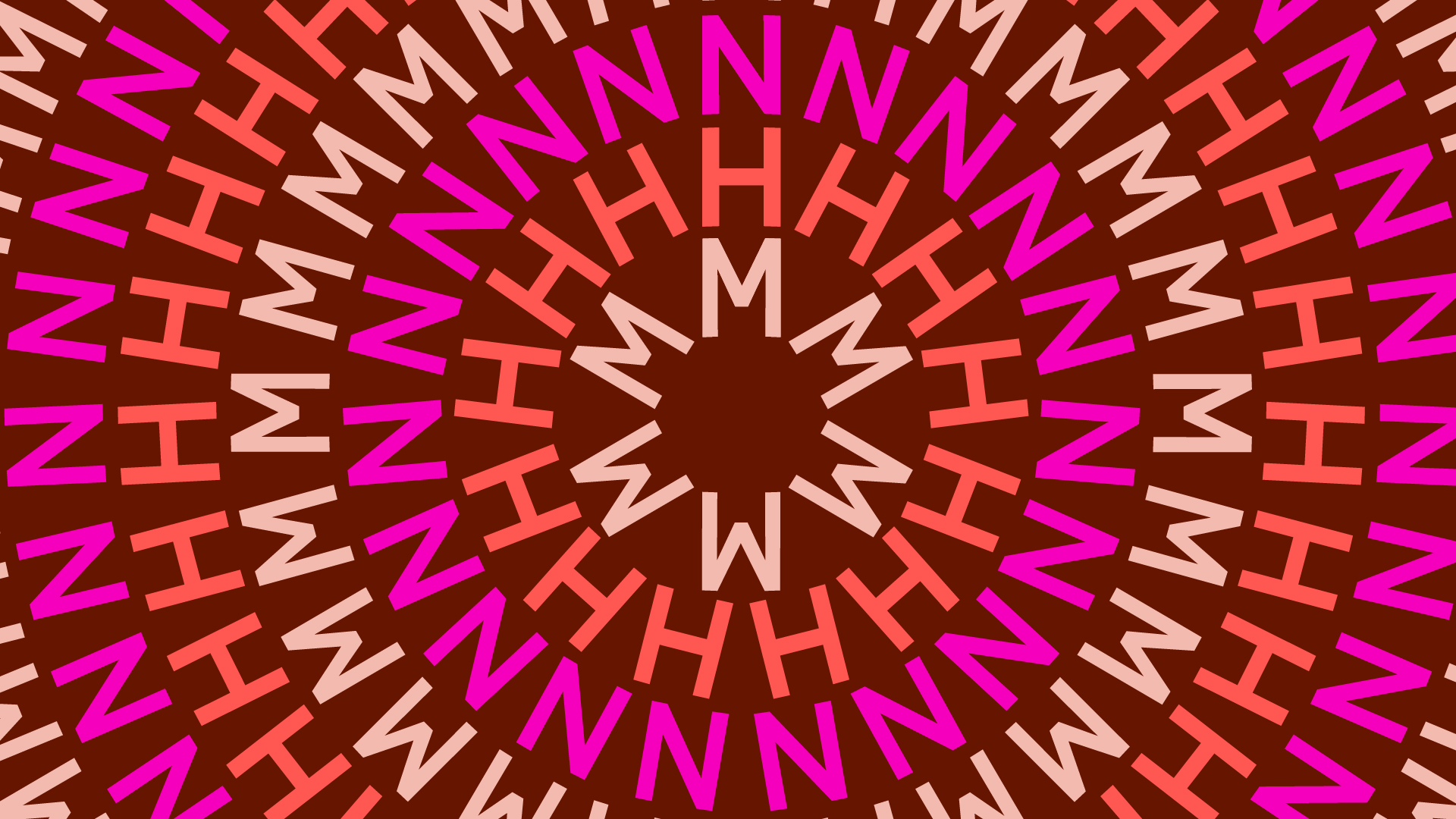
Word Rings
These allow us to add contextual words in circles, use 1-2 words per ring.
The size, distance, frequency and colour are all variable – allowing us to create unique and engaging graphics. They can use any number of rings but must always use uppercase letters and use as few words as possible.
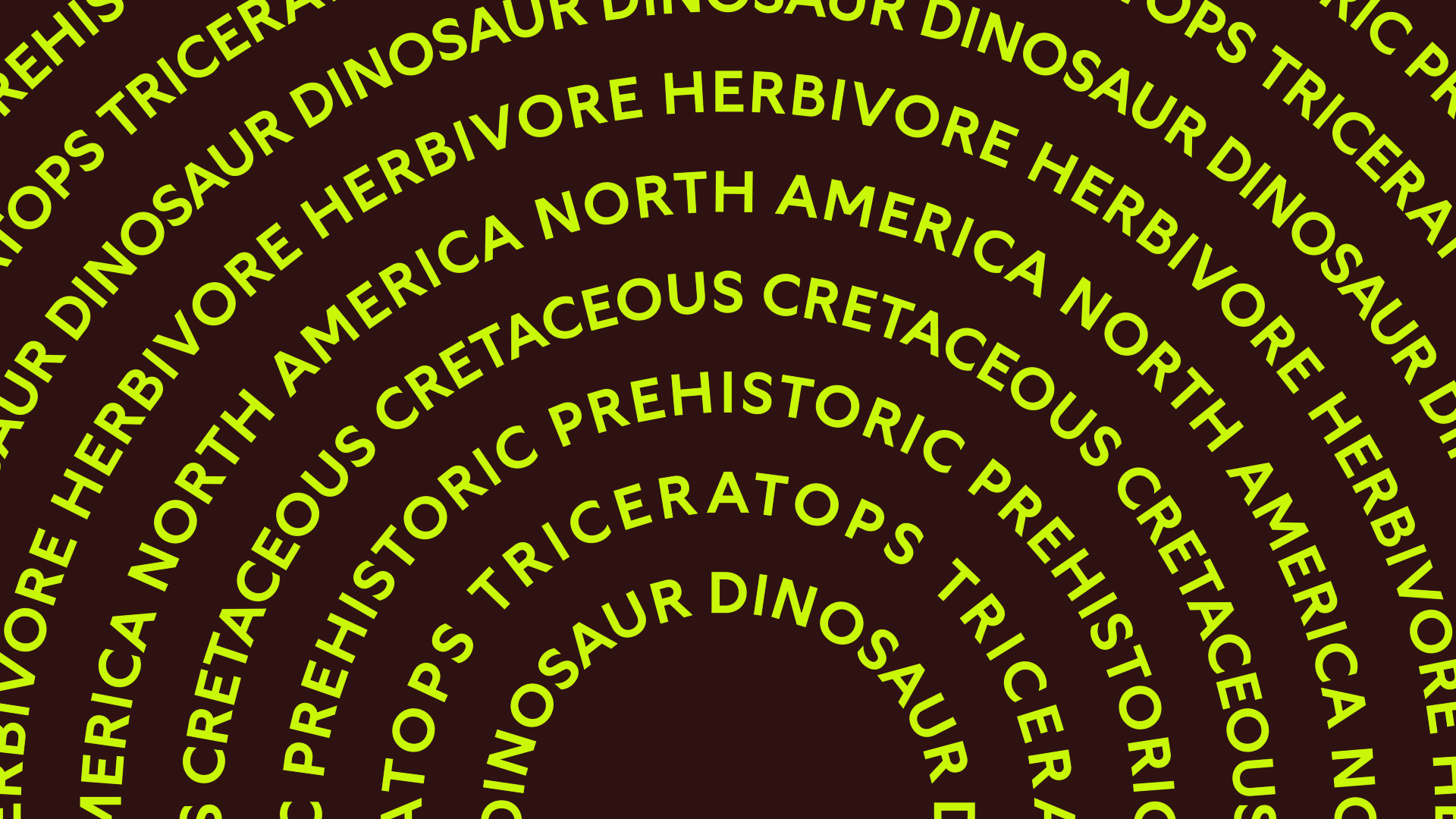
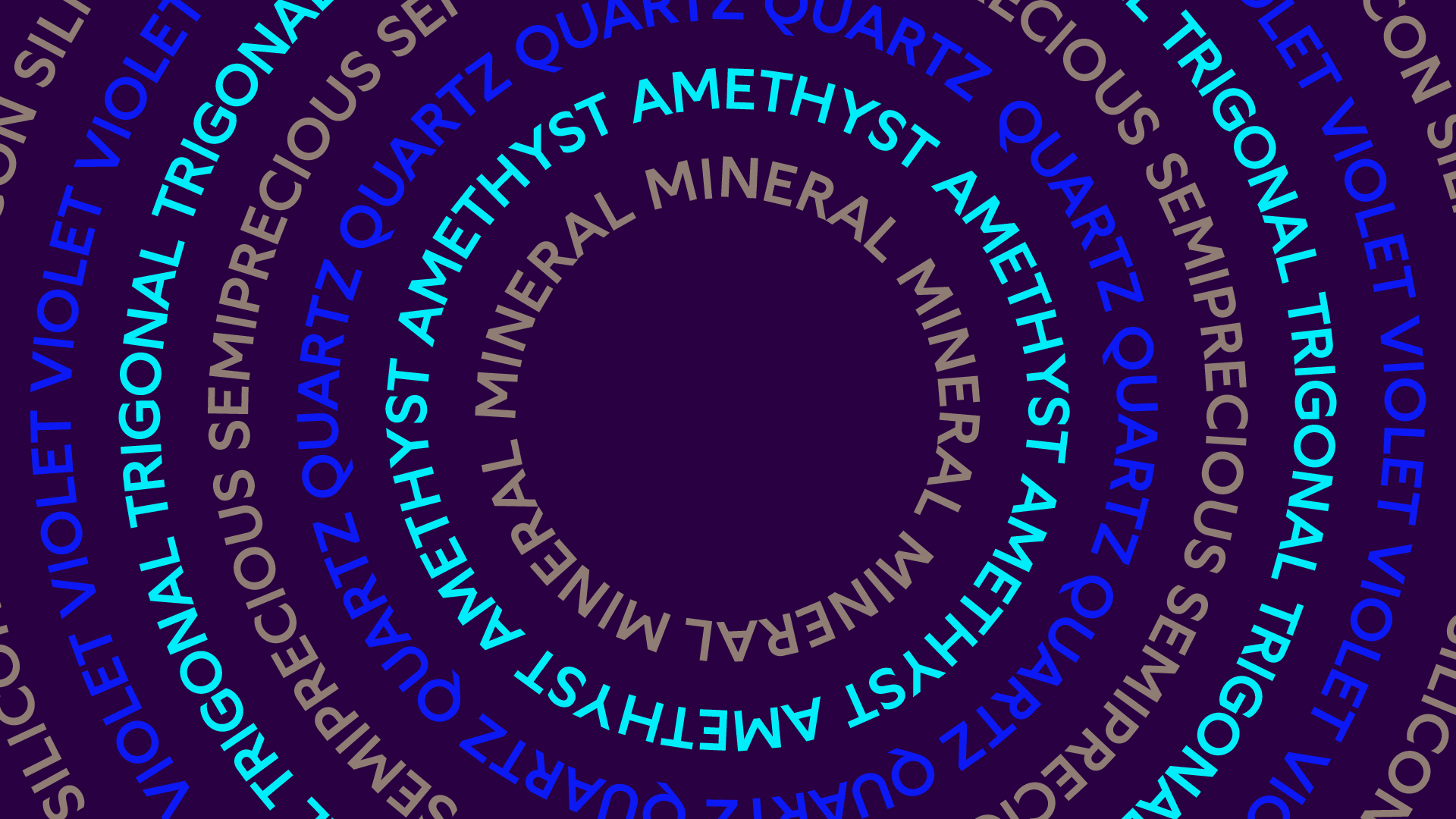
Caution
Designer discretion is required to choose an appropriate colour combination and motion principle to ensure they are used with accessibility in mind.
Chromaticity significantly impacts visual disturbance - cool/warm colour combinations are particularly problematic and vibrant colours enhance issues around visual disturbance.
For example, a combination of high-intensity may be adequate in short time periods or at small scale. While a low-intensity combination may be more appropriate as a background for typography or in subtle applications where the feeling may be more important than immediate attention.
The NHM Generator
We always use the proprietary software, the NHM Generator, for easy creation of Pattern and Word Ring assets. It is used to design both static and motion outputs in a variety of vector- and rastor-based formats. Presets allow for easy reproduction of motion and colour – we can also upload audio files to create reactive motion outputs.
To access the tool, contact the Design Team.

Pattern position
Our patterns are positioned either in predetermined locations on the format or by interacting with content.
Fixed positions
Patterns and Word Rings are positioned in six predetermined positions no matter the proportions of the format:
- Centre
- Centre right edge
- Centre left edge
- Bottom left edge
- Bottom right edge
- Bottom middle edge
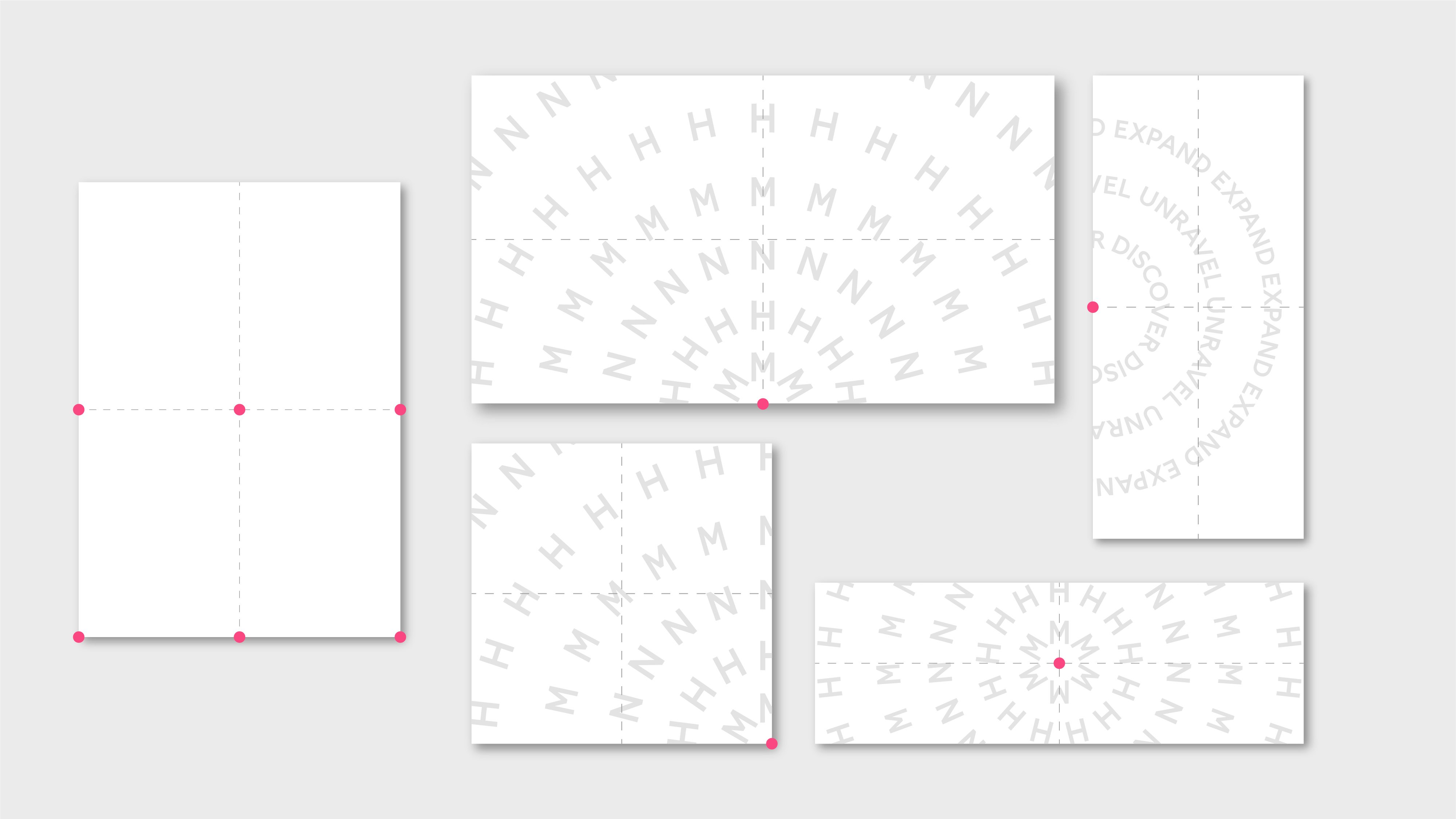
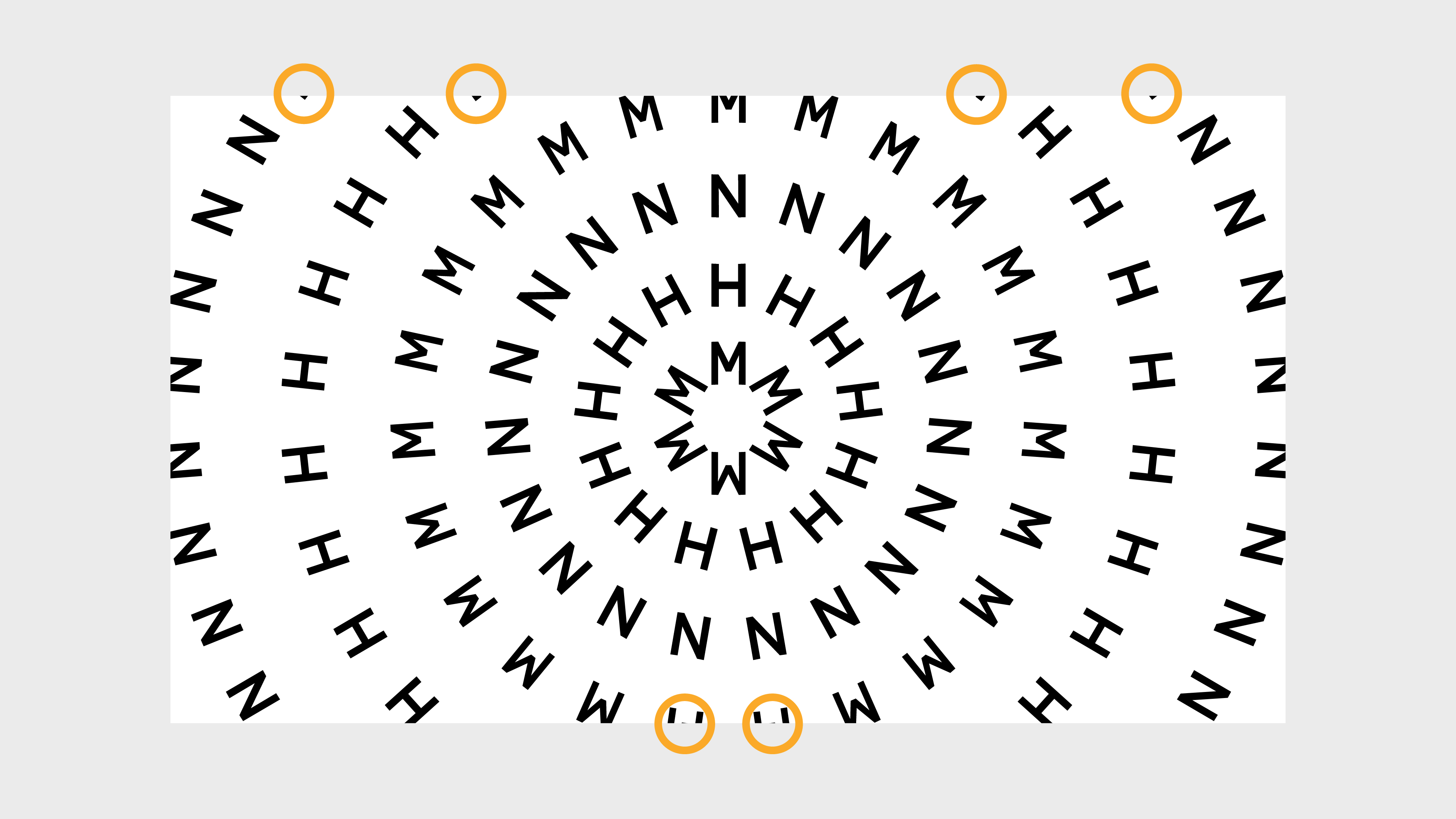
Watch out
Adjust pattern frequency and placement to avoid small bits on the edges
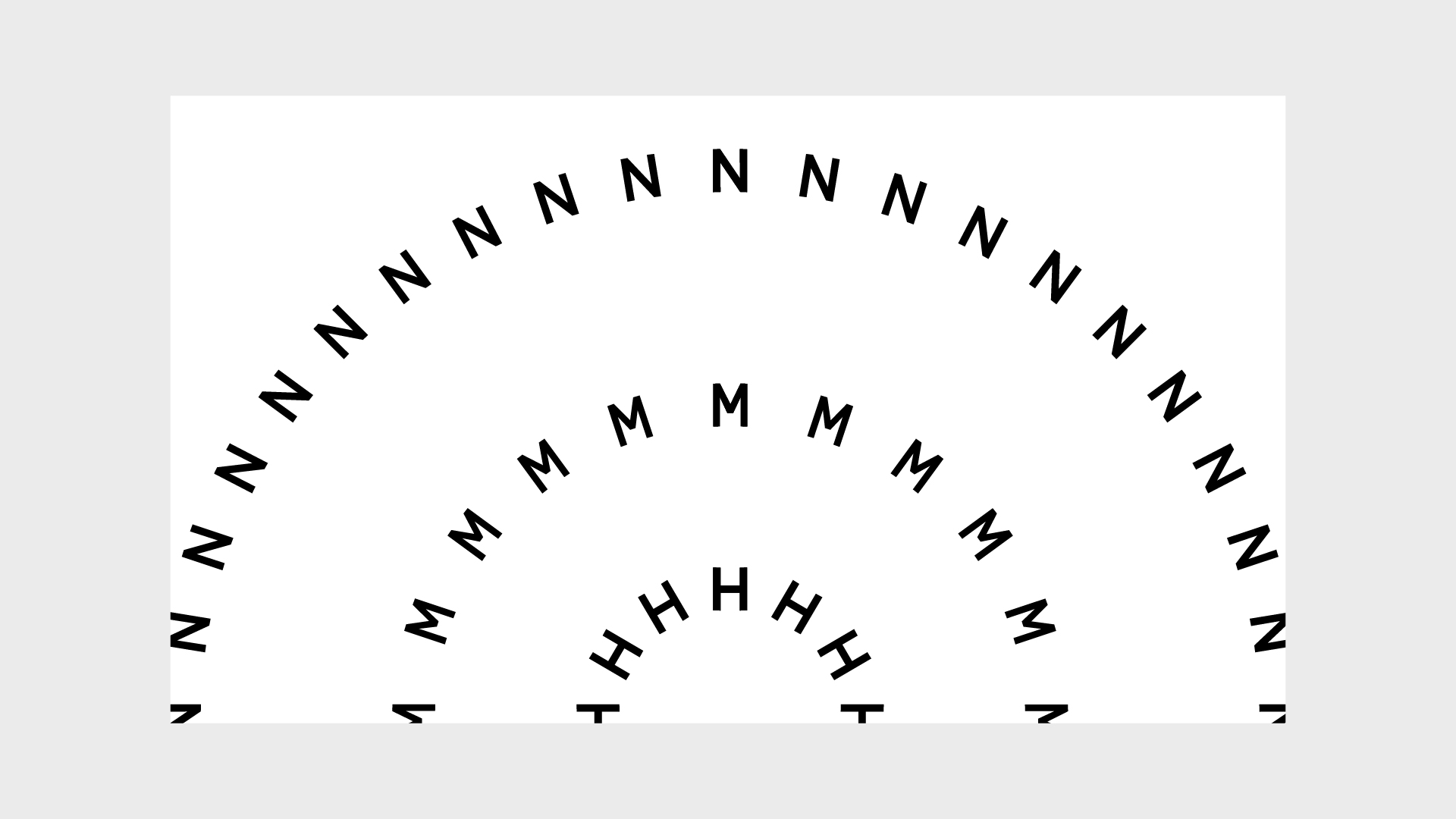
Incorrect order
The pattern must always read NHM in the correct order
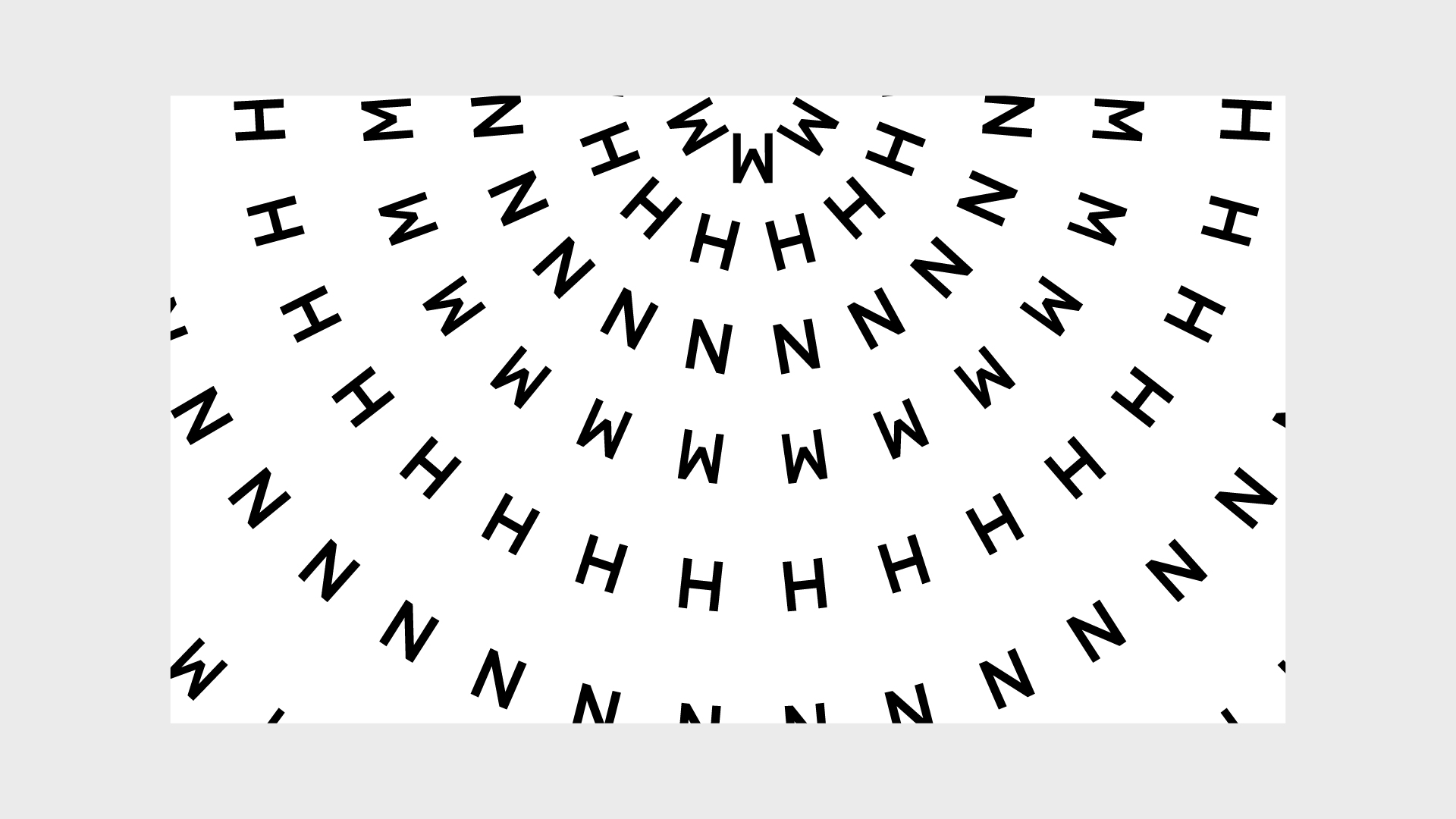
Incorrect use
The pattern must always be positioned on or below the half way point so that the letters do not read upside down
Interacting with content
Patterns and Word Rings can interact with imagery by circling a subject - this is more successful for single-object imagery. Consider positioning in context to the image - ensure there is enough space around focal points and avoid unwanted metaphors, for example a collar around someone's neck.
For cut-out imagery, the Pattern or Word Ring can go in front or behind to add depth.
Both of these option can be applied to static and motion content.
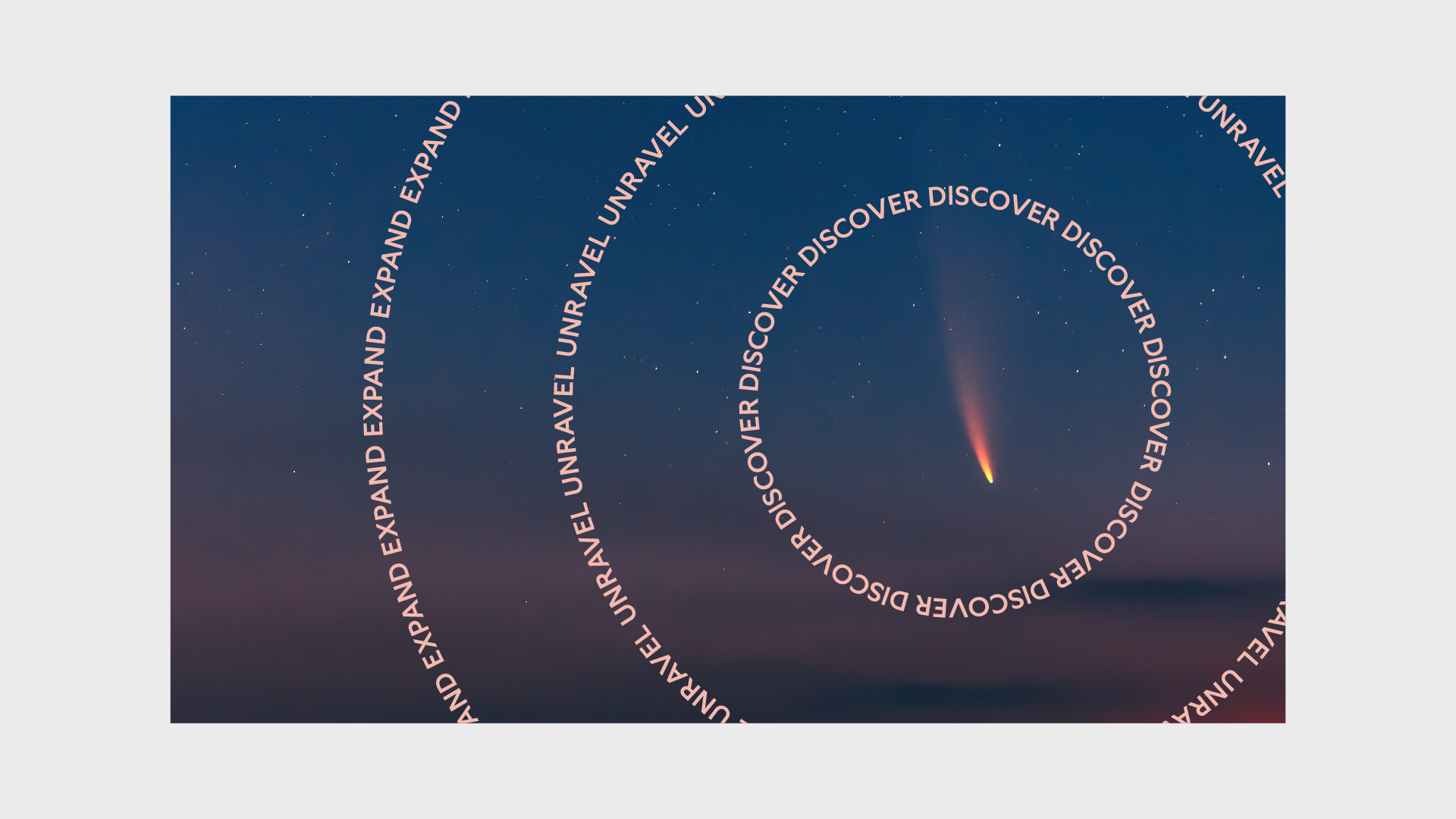
Patterns and Word Rings can be placed in any position of the layout when interacting with images.
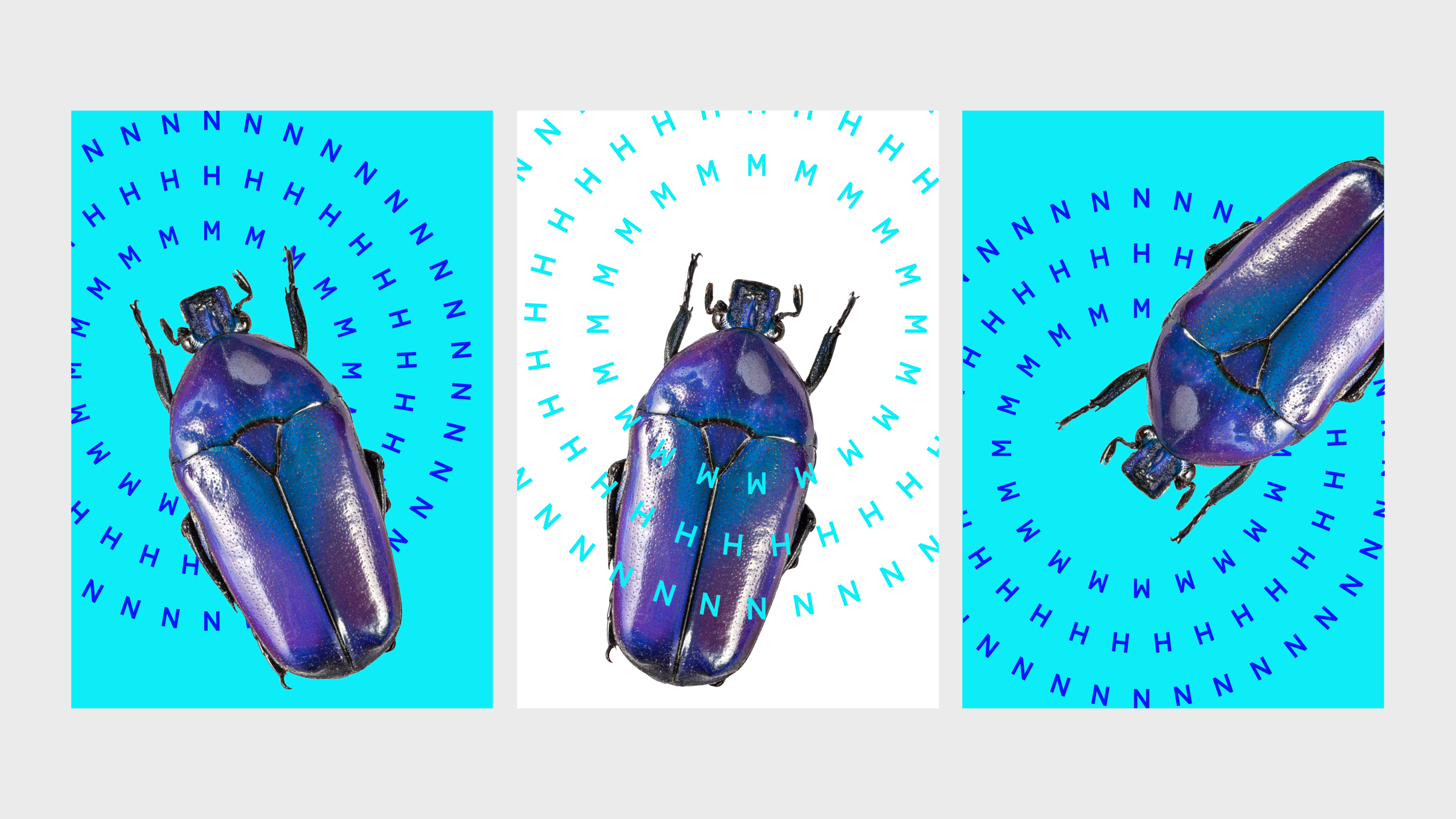
Patterns and Word Rings can be placed in front or behind images
Patterns in use
